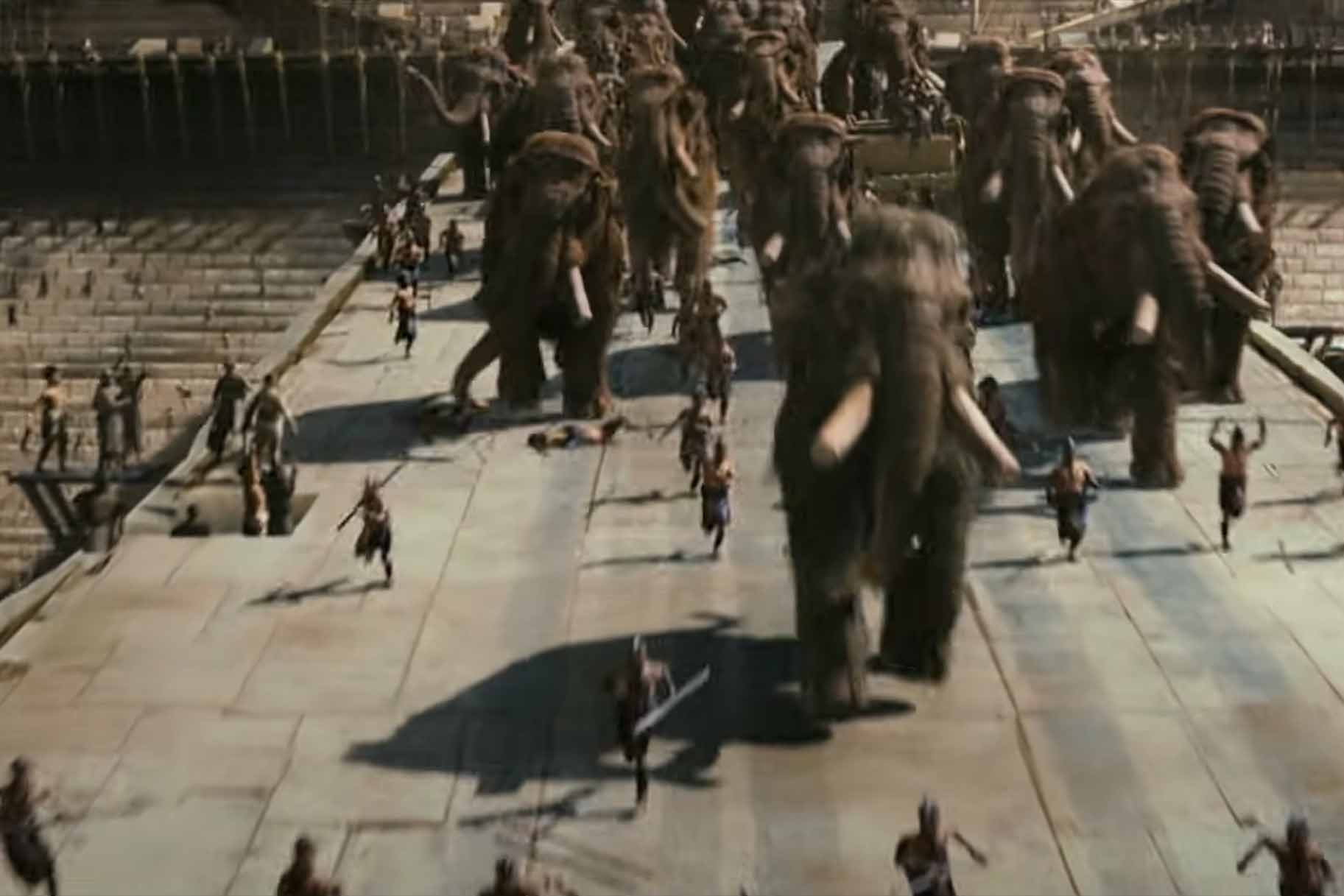Create a free profile to get unlimited access to exclusive videos, sweepstakes, and more!
Lost City Discovered in the Amazon Dates Back to 500 B.C.
Tens of thousands of people lived there for roughly a thousand years.

Roland Emmerich’s 10,000 B.C. (streaming now on SYFY) imagines one potential past, but has little if any archaeological evidence backing up its narrative. The story takes place 12,000 years ago among a small society of hunter-gatherers called the Yagahl. They spend their days hunting mammoths and dreaming of a better future, but their relatively peaceful lives are thrown into turmoil when they are attacked, kidnapped, and enslaved by a more technologically advanced civilization. While there is no evidence that the events of 10,000 B.C. ever took place, there is plenty about human history that we don’t know.
RELATED: Is That Helm's Deep, or Did Drones Finally Find the Ancient Lost City of Natounia?
Humanity’s own past is almost as mysterious as its future. We’ve lived on this planet in something like our current form for roughly a quarter of a million years and most of that history has been lost. Written records don’t appear until five or six thousand years ago, and even then, those records are sparse. Most of what we know about ancient civilizations and peoples comes from the artifacts they left behind. The rest comes from our imaginations. Perhaps we shouldn’t be surprised, then, that archaeologists recently uncovered a never-before-seen lost city in the Ecuadorian Amazon.
Lost City in the Amazon Supported Tens of Thousands of People
The first evidence of a hidden, ancient city in the Amazon was found in the 1970s, but no comprehensive study has been carried out until now. The discovery was led by archaeologist Stéphen Rostain, who found evidence of earthen mounds more than 20 years ago and has been itching to survey the area ever since.
Researchers used a combination of ground excavations and aerial surveys using LiDAR to scan the jungle for hidden structures. The survey found approximately 6,000 rectangular platforms (check out the LiDAR scans of the city here) organized in an obviously artificial arrangement. Each platform is roughly 20 meters by 30 meters (66 feet by 33 feet) and two to three meters high. Those platforms, which archaeologists believe were the sites of homes and other communal buildings, are connected by a complicated series of roads and canals, including one road which extends 25 kilometers (16 miles).
RELATED: Surprising Things The Croods Got Right About Ancient Human History
For a long time, researchers assumed that any peoples living in the Amazon throughout antiquity were necessarily scattered and nomadic. The presence of this city demonstrates just how untrue that “primitive” view of non-European cultures is.
The city was built and occupied by the Upano people beginning roughly 2,500 years ago in 500 B.C., and they lived there until sometime between 300 and 600 A.D., a period of up to 1,100 years. Moreover, based on the number of structures, their organization, and the level of complexity in the road and canal systems, archaeologists estimate a population measuring in the tens of thousands.
Far from the non-technological nomadic peoples often imagined in human history, the ancient city of the Upano reminds us that our ancestors were just as capable and curious as we are, regardless of when or where they lived.
Relive one possible past in Roland Emmerich’s 10,000 B.C., streaming now on SYFY.


























